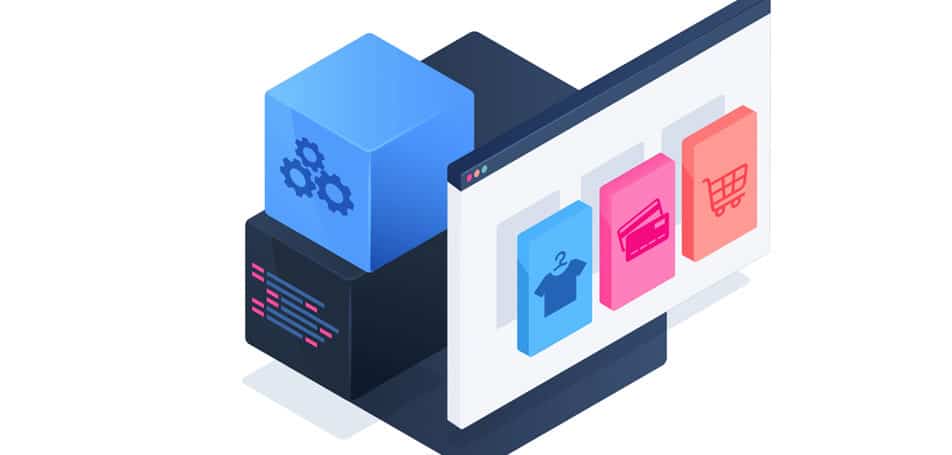
Today, eCommerce retailers have to deal with the increasing demands of consumers and keep up with an ever-evolving digital marketplace, all while continuing to maintain an updated website. It can take a lot of effort to stay at the forefront of technological developments, so many online business owners are turning to a flexible, modern solution that has the capability to decouple their website front-end from the back-end. This type of eCommerce platform is frequently referred to as a headless commerce solution.
What is Headless Commerce?
“Headless commerce” gets its name from the fact that the data and business aspects (the backend) of the website is separated from the front-end store data (what customers see when they visit a website). With traditional websites, these aspects are coupled together, which makes it difficult to do any spontaneous updates or make changes without the aid of a developer. Headless commerce can be separated into up to three layers, and each one can be tweaked without affecting the other factors. These layers can include:
- Presentation layer: All of the front-end aspects, such as CMS, custom storefronts, apps, chatbots, kiosks, etc.
- API communication: Exists to ensure that API calls happen quickly and smoothly.
- Back-end commerce: Includes the essential functions that keep the store running, such as the cart, catalog, pricing, and the integration framework.
Pros of Headless
Separating the back-end from the front-end of your store can open up several new opportunities and advantages for you that you wouldn’t have been able to achieve with a traditional monolithic website. Some of the top reasons to switch to a headless solution include:
- Increased flexibility. Since the front-end and back-end layers of your eCommerce store will be separated, retailers can feel free to choose the best solutions and integrations for each “side” of their business. Instead of relying on one provider to manage both the front-end and the back-end, you can select the top performers that have the exact capabilities you require.
- Seamless integrations. Updates and integrations that might take weeks to complete with a traditional eCommerce platform can be finished in no time when a retailer switches to a headless solution, thanks to the API-driven capabilities.
- Improved user experience. Front-end developers can make numerous updates and changes to the site’s design without ever having to write a single line of code or consult a developer to edit the back-end of the store. The front page of the site will be able to stay up-to-date with ease, and customers will enjoy a fully customized shopping experience.
- Faster load times. Customers will be able to browse your website more efficiently since all of the data will be transferred through API calls instead of being coupled directly to the back-end. Plus, faster load times will help you gain conversions, boost your SEO rankings, and reduce your bounce rates!
Cons of Headless
If this is the first time you’ve considered switching to a headless solution, it might seem like a no-brainer to make the switch. After all, who wouldn’t want a faster website with greater flexibility?! However, before you decide to jump into decoupling your website, be aware of the potential disadvantages of updating too soon:
- Can be expensive. Separating your store into two parts means that you will need to pay for two separate solutions. There will also be costs to simply making the switch from a monolithic website to a headless option.
- May increase complexity. In some ways, headless commerce makes life easier for eCommerce merchants, but relying on multiple solutions and managing two separate environments can become increasingly difficult. You might need to hire additional developers just to keep your site running smoothly.
Is This Solution Right for You?
If you feel like your website is always struggling to keep up with the latest eCommerce tools and technologies, a headless eCommerce solution could be the investment your business needs to stay relevant well into the next decade. Whether you want additional speed, flexibility, or customizability options, making the decision to go headless can be a major game-changer
However, we understand that making the switch can be daunting. It’s a big investment, and you want to be sure that this solution will positively impact your business! With that being said, take the time to assess your company’s needs and weigh each factor to determine which option will ultimately serve your company the best.
For additional resources and information about headless commerce, feel free to check out our other blog posts or reach out to a Wagento developer today!







